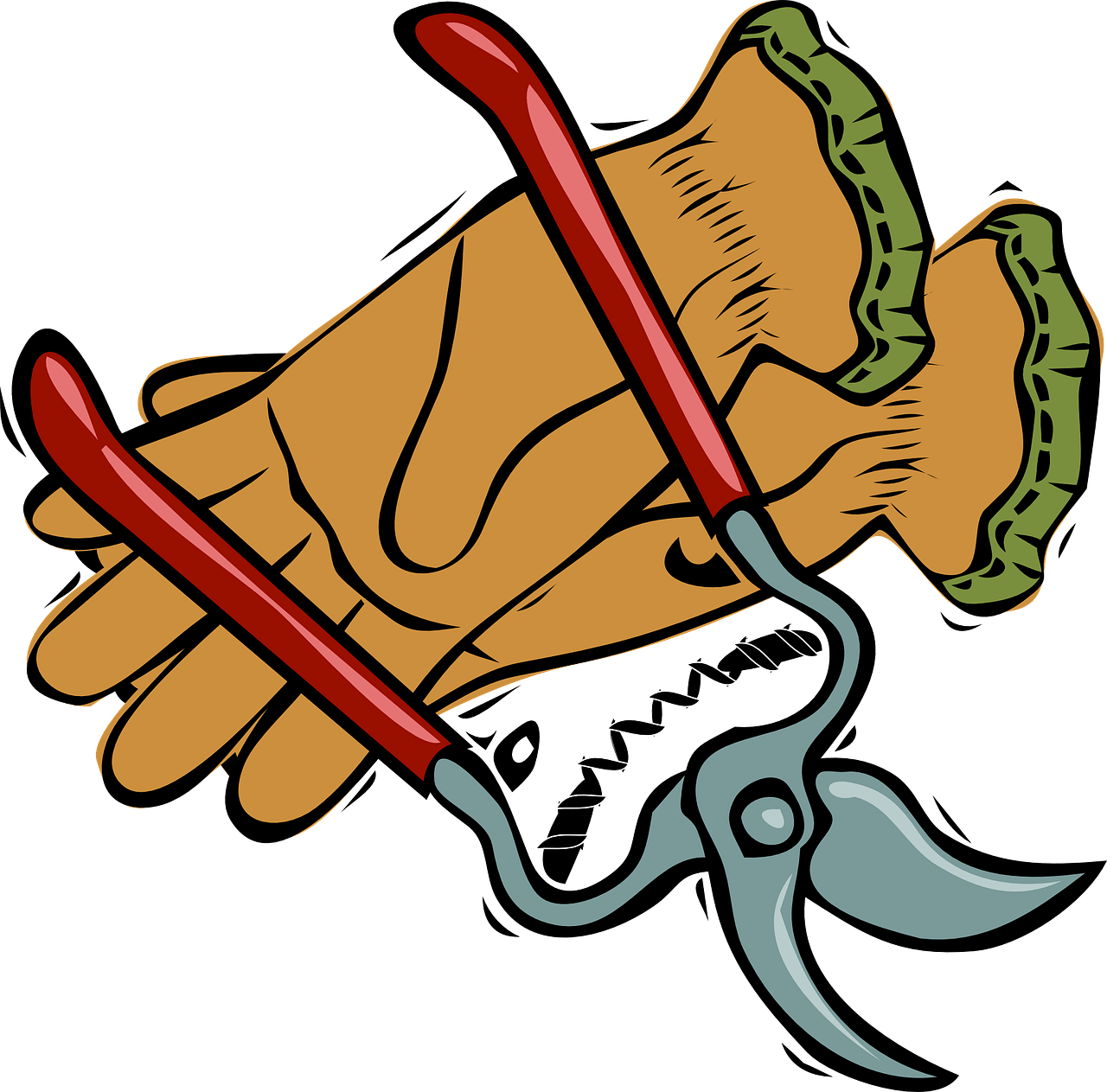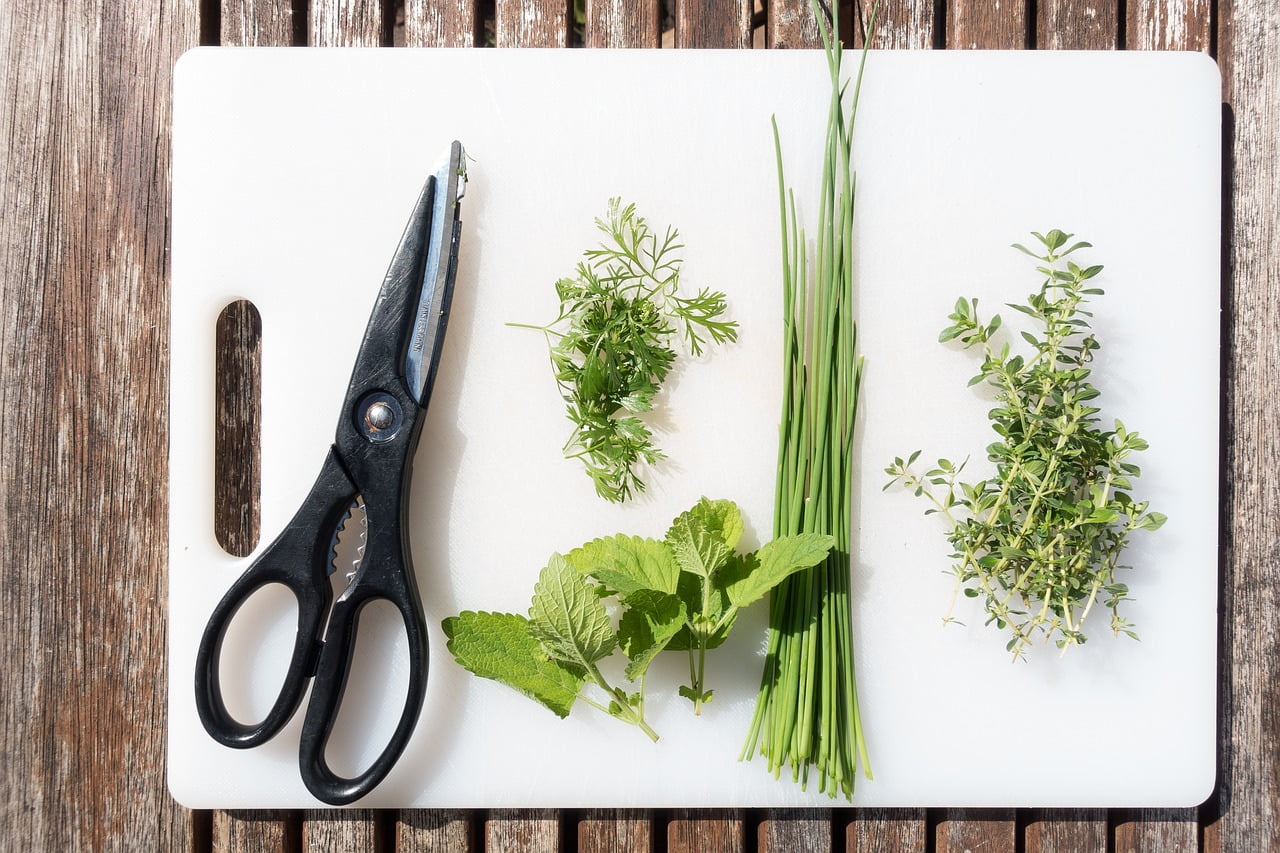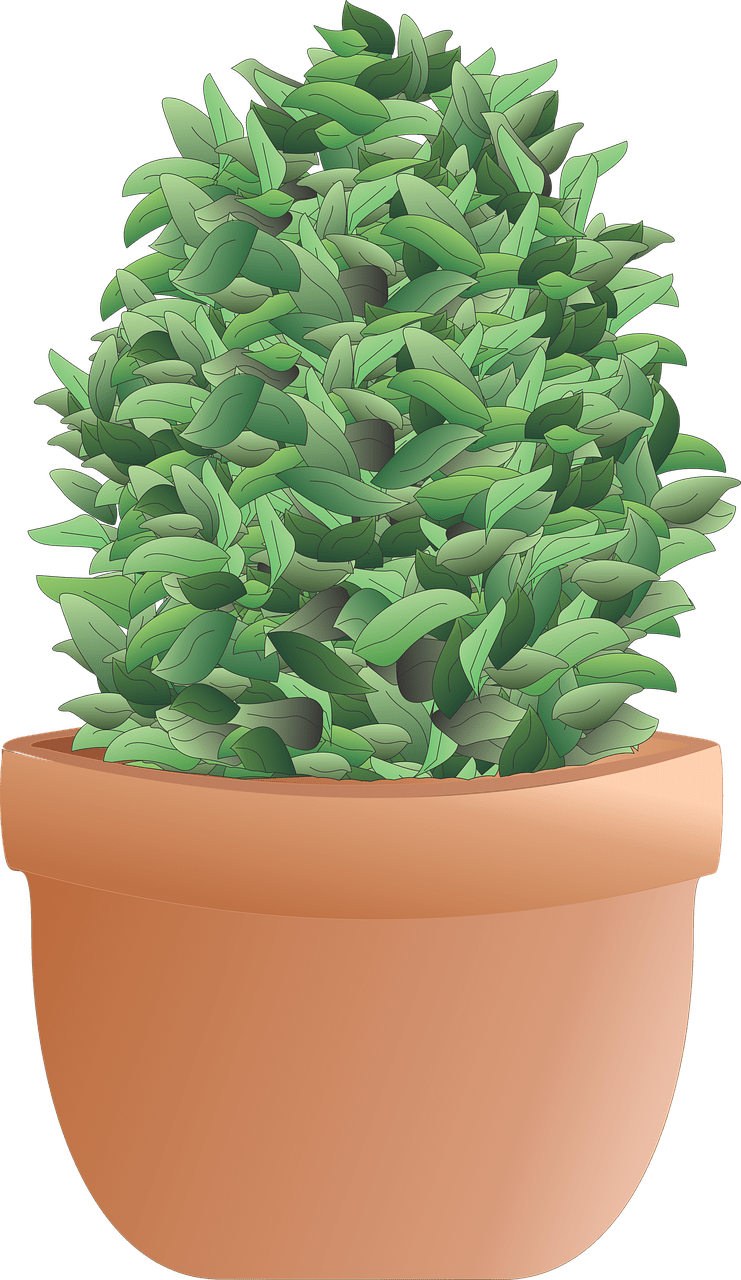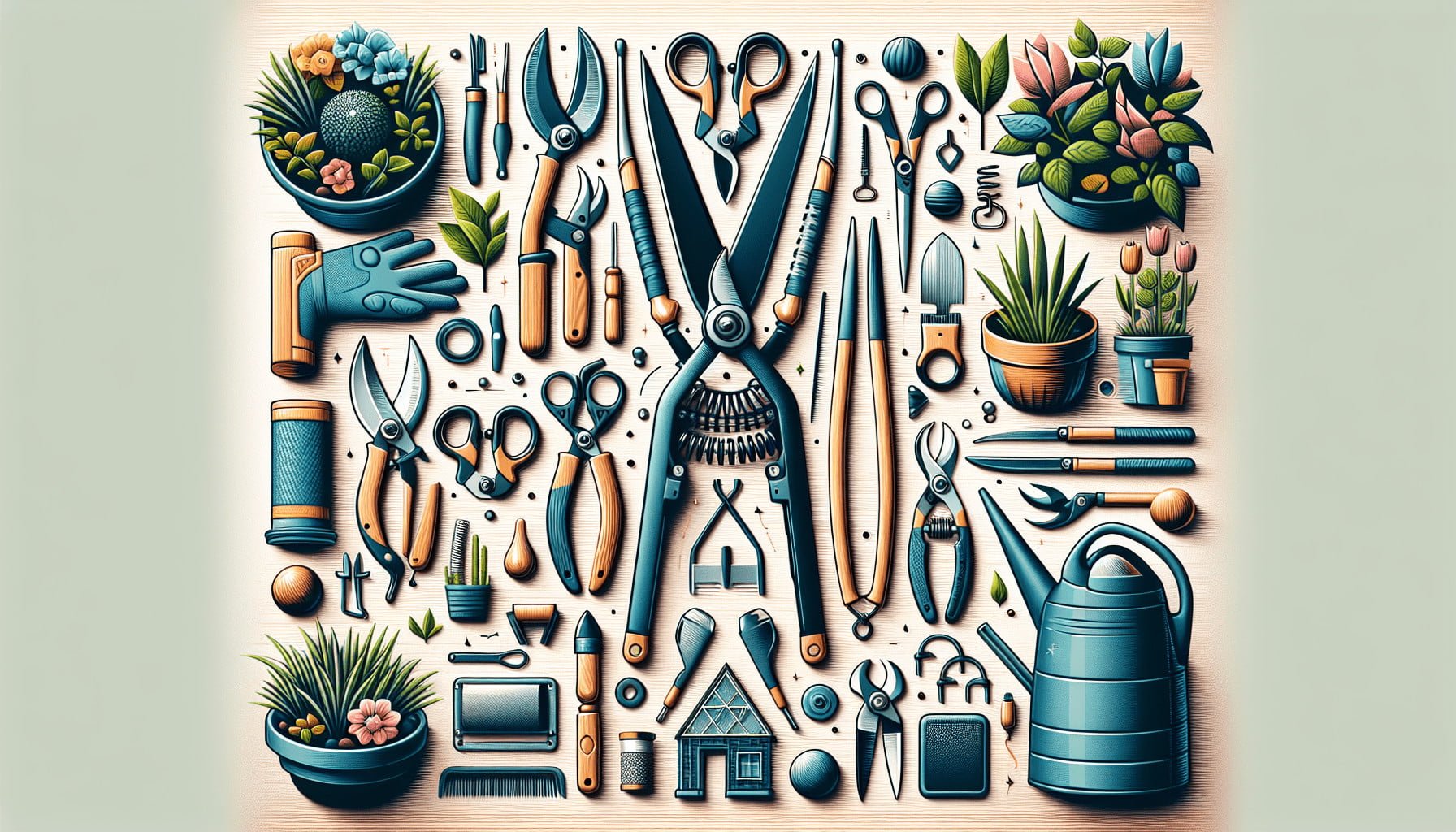Looking to take your small-space gardening to the next level? Look no further than the best pruning shears specifically designed for your needs. With limited space, it’s crucial to have the right tools to maximize efficiency and maintain the health of your plants. In this article, we will explore some of the top pruning shears available on the market, discussing their features and benefits. Get ready to make your gardening experience in tight spaces a breeze with these top-notch pruning shears.

1. Pruning Shear Types
When it comes to pruning shears, there are several types to choose from, each with its own unique features and benefits. It’s important to understand the differences between these types so that you can select the best pruning shears for your small-space gardening needs.
Anvil Pruning Shears
Anvil pruning shears feature a single cutting blade that closes against a flat, metal surface known as the anvil. This design makes them ideal for cutting through thicker stems and branches. Anvil pruning shears provide great strength and are particularly useful for cutting deadwood or pruning older, woody plants.
Bypass Pruning Shears
On the other hand, bypass pruning shears have two curved blades that work much like a pair of scissors. As the name suggests, one blade bypasses the other when cutting, resulting in a clean and precise cut. These shears are particularly effective for delicate plants and live branches.
Ratchet Pruning Shears
Ratchet pruning shears are designed to make cutting through thicker branches easier. With a ratchet mechanism that provides a leverage advantage, these shears allow you to make cuts in stages, reducing the required force. This makes them a great choice for individuals with reduced hand strength or for cutting larger branches.
2. Cutting Capacity
When choosing pruning shears, it’s important to consider the maximum cutting capacity of the tool. Different shears have different limits on the thickness of branches they can effectively cut through. Knowing the typical diameter of the plants you will be pruning will help you select the right tool for the job.
Consider the Maximum Cutting Capacity
Some pruning shears can handle branches up to 1 inch in diameter, while others are better suited for branches up to 3/4 inch or smaller. It’s crucial to choose shears with a cutting capacity that matches or exceeds the size of the branches you will be pruning to ensure efficient and effective trimming.
Choose Based on the Types of Plants You Will Be Pruning
The cutting capacity should also be determined by the types of plants in your garden. If you mainly have smaller shrubs and flowers, shears with a lower cutting capacity will suffice. However, if you have larger trees or thicker branches to trim, opt for pruning shears with a higher cutting capacity to avoid any frustration or potential damage to the tool.
3. Blade Material
The material of the pruning shears’ blades plays a significant role in their durability and cutting performance. Here are a few common blade materials to consider when selecting the best pruning shears for your small-space gardening needs.
Stainless Steel Blades
Stainless steel blades are known for their durability and corrosion resistance. They are less likely to rust, allowing for easy maintenance and a longer lifespan. Pruning shears with stainless steel blades are suitable for general pruning tasks and are a reliable choice for most gardeners.
Carbon Steel Blades
Carbon steel blades are incredibly sharp and hold their edge well, making them ideal for tougher pruning jobs. These blades are more susceptible to rust, so proper care, such as wiping them dry after use, is essential. Carbon steel pruning shears are a great option for those who frequently encounter thick branches or need to prune woody plants.
Titanium-Coated Blades
Pruning shears with titanium-coated blades offer the best of both worlds: durability and sharpness. The titanium coating enhances the blade’s hardness and resistance to wear and tear. This makes them particularly suitable for heavy-duty pruning tasks and ensures a clean and precise cut every time.
4. Ergonomic Design
Ensuring that your pruning shears have an ergonomic design can significantly enhance your gardening experience. Here are a few key features to consider when selecting pruning shears for small-space gardening.
Comfortable Handle Grip
Look for pruning shears with handles that provide a comfortable grip, as you’ll be using them for extended periods. Soft, non-slip handles help minimize hand fatigue and provide a secure hold, allowing you to concentrate on pruning without discomfort.
Right-handed or Left-handed Options
For optimal comfort and ease of use, it’s crucial to choose pruning shears that are designed specifically for your dominant hand. Some models offer options for both right-handed and left-handed individuals, ensuring that everyone can find a suitable tool for their needs.
Shock-absorbing Features
Pruning can involve repetitive motions, and the impact of each cut can put strain on your hands and wrists. Look for pruning shears with shock-absorbing features such as cushioned handles or springs that help reduce the impact and vibration during use. This feature can greatly improve your overall pruning experience and minimize discomfort.

5. Weight and Size
Considering the weight and size of your pruning shears is important, especially when working in small spaces. Here’s why these factors matter and what to look for in your pruning tool.
Lightweight for Easy Maneuverability
Opt for lightweight pruning shears, as they allow for greater maneuverability and ease of use. Especially when working in tight spaces, a lightweight tool will make it easier to navigate and prune without causing strain on your arms or hands. Look for materials like aluminum or composite construction to ensure a lighter weight without compromising durability.
Compact Size for Small Spaces
In small-space gardening, every inch matters. Choosing pruning shears with a compact size will enable you to access tight spots and navigate around dense foliage with ease. Look for shears with a shorter overall length, ensuring that they can easily fit into narrow areas without sacrificing cutting capacity or performance.
6. Safety Features
Safety should always be a top priority when working with pruning shears. Selecting tools with built-in safety features can provide peace of mind and help prevent accidents or injuries.
Locking Mechanism
Pruning shears with a locking mechanism allow you to secure the blades in the closed position when not in use. This prevents accidental openings and protects you from potential cuts while carrying or storing the shears. Look for a secure locking mechanism that is easy to operate but holds the blades firmly in place.
Protective Blade Cover
A protective blade cover is an essential safety feature to look for when choosing pruning shears. It prevents accidental contact with the sharp cutting blades, both when using the shears and during storage. Ensure that the blade cover is sturdy, easy to attach, and provides full coverage for the entire length of the blades.

7. Maintenance and Durability
The longevity and maintenance requirements of your pruning shears are vital factors to consider. Here are a few aspects to keep in mind when selecting shears that will withstand the test of time.
Ease of Cleaning
Pruning shears can get dirty after each use, so it’s essential to choose shears that are easy to clean. Look for models with a simple design and minimal grooves or crevices where plant material can get trapped. This will allow for quick and efficient cleaning, ensuring that your shears are always ready for use.
Corrosion Resistance
Since pruning shears are often exposed to moisture, it’s crucial to select a pair that is resistant to corrosion. Stainless steel or titanium-coated blades are excellent choices for their durability and rust resistance. Additionally, consider pruning shears with handles made from materials that are also resistant to moisture, such as composite plastics or rubber.
Replaceable Parts
Even the most durable pruning shears can experience wear and tear over time. To ensure longevity and cost-effectiveness, look for shears that offer replaceable parts. This allows you to replace worn-out or damaged components, such as the blades or springs, rather than having to purchase an entirely new tool.
8. Price Range
Consideration of your budget is crucial when selecting pruning shears. Here are a few factors to keep in mind to ensure you find the right balance between price and quality.
Consider Your Budget
Determine a budget for your pruning shears and stick to it. While it’s tempting to go for the most expensive option, it’s important to remember that there are high-quality pruning shears available at various price points. Assess your needs and prioritize features that are essential for your gardening tasks to make a more informed decision within your budget.
Long-term Investment vs. Short-term Use
Think about how often you’ll be using your pruning shears and the longevity you expect from them. If you plan to use the shears frequently and invest in long-term gardening projects, it may be worth spending a bit more for a higher-quality tool that will last. However, if you have limited gardening needs or only require the shears for occasional use, you can opt for a more affordable option without sacrificing performance.

9. Customer Reviews and Ratings
Utilizing customer reviews and ratings can provide valuable insight into the performance and durability of pruning shears. Here’s how to make the most of this information.
Research and Read Reviews
Take the time to read reviews from other gardeners who have purchased and used the pruning shears you are considering. Look for feedback on performance, durability, and any potential issues that may have arisen during use. Consider both positive and negative reviews to get a well-rounded view of the product.
Consider Reputable Brands
Reputable brands often have a track record of producing high-quality gardening tools. Look for pruning shears from well-known brands with positive customer feedback and a reputation for reliability. While there may be lesser-known brands that offer excellent products, sticking with reputable options can provide added peace of mind.
10. Additional Features
Some pruning shears offer additional features that can enhance your pruning experience and provide added functionality. Here are a few features to consider when selecting the best pruning shears for your small-space gardening needs.
Sap Groove for Clean Cuts
A sap groove is a small indentation on the pruning shears’ cutting blade. It helps redirect sap away from the blade, preventing it from sticking and causing potential damage or hindering your cutting ability. This feature is especially useful when working with plants that produce large amounts of sap.
Wire-cutting Notch
A wire-cutting notch allows you to cut through thin wires without damaging the blades. This feature is handy for tasks such as securing plants or repairing garden fencing. Look for pruning shears with a wire-cutting notch if you anticipate needing this functionality.
Locking or Catch Mechanism
Apart from safety features previously mentioned, some pruning shears come with a locking or catch mechanism that helps keep the blades closed during storage. This not only enhances safety but also prevents accidental openings that could cause damage to the shears or other items in your gardening tool storage area.
In conclusion, when selecting the best pruning shears for small-space gardening, consider factors such as the type of shears, cutting capacity, blade material, ergonomic design, weight and size, safety features, maintenance and durability, price range, customer reviews, and additional features. By taking these factors into account, you can ensure that you choose pruning shears that are not only efficient and versatile but also well-suited to your gardening needs. Happy pruning!

